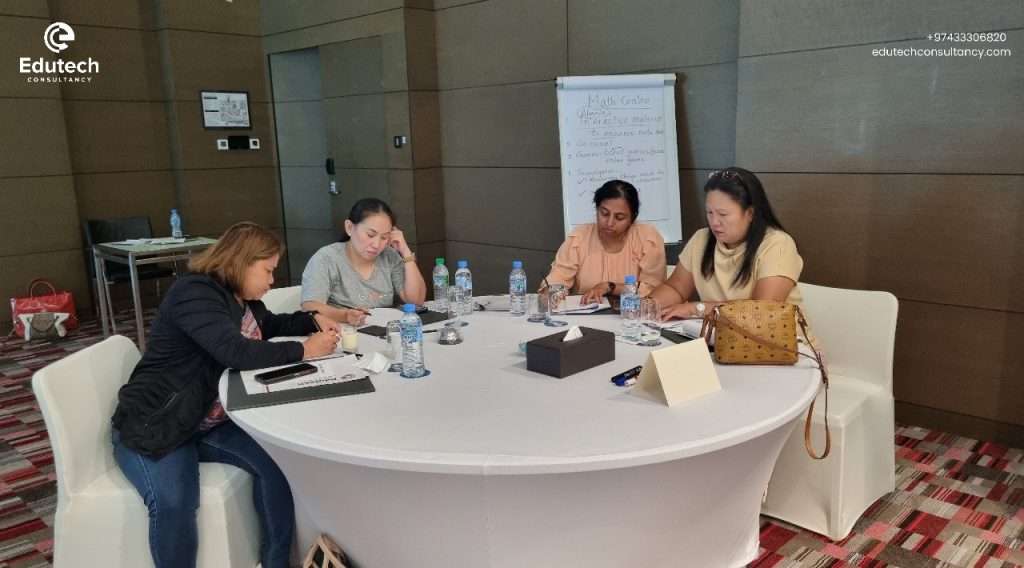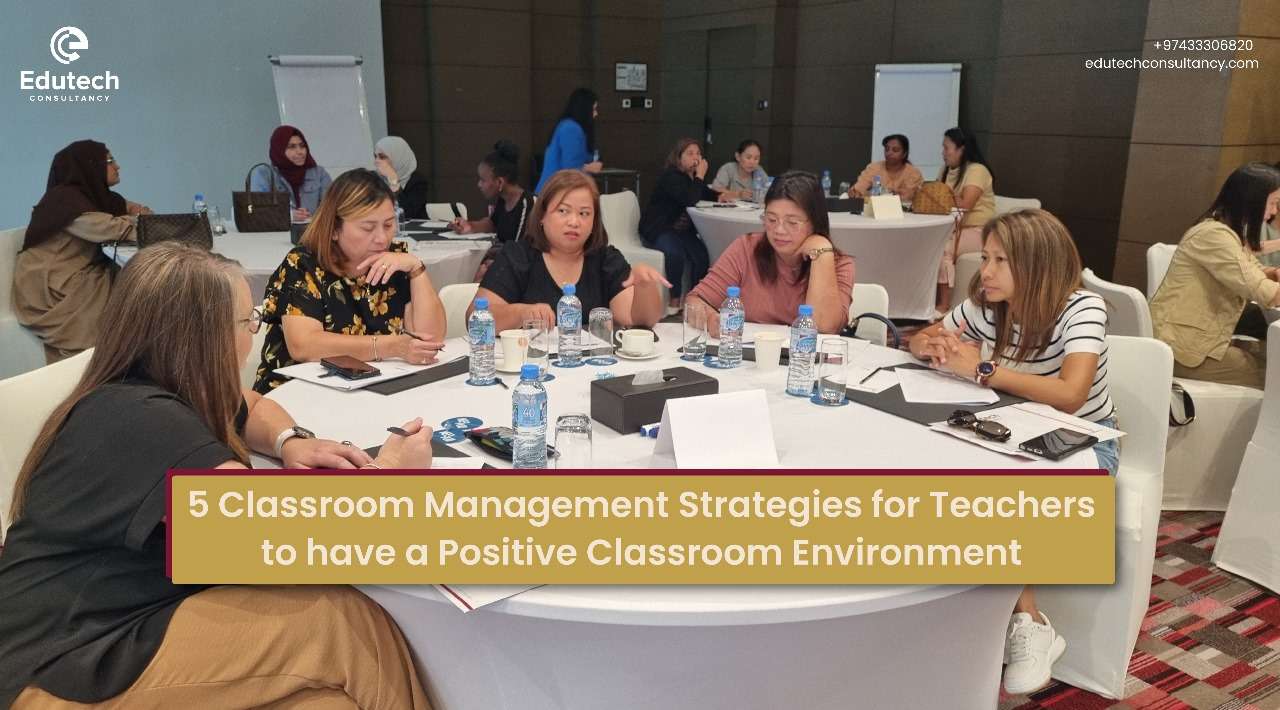Have you ever gone through a situation in your classroom where students show disruptive behaviors, are less interested in listening to teacher’s instructions or show conflict of statement with unexpected reactions? This is something many teachers face when it comes to building a well-managed classroom. When we talk about classroom management strategies for teachers, it’s more than just flowing the routine or subjects.
But let’s discuss what defines a well-managed classroom? Is it the regular subjects blocks followed to end the day on time or is it the list of rules displayed in the classroom and students just go through the day following as an order. While this may be an important aspect, a well-managed classroom is the one in which there is a positive and supportive learning environment for the students.
A positive learning environment is extremely important for students’ success and well-being. Likewise, environment that helps students grow in terms of better engagement, encouraging behaviors and meaningful relations with teachers and among students serves a list of benefits.
Firstly, it leads to a conducive learning environment in the classroom. Secondly, it plays a great part in students’ overall academic success. Additionally, it also helps develop social and communication skills, boost their confidence and self-esteem and make them resilient.
In this blog we will share some classroom management strategies for teachers that work well in promoting a positive learning environment for students.
5 Classroom Management Strategies for Teachers
While there is a list of ways teachers can manage their classroom well, we have listed 5 classroom management strategies for teachers that work. Also, these are supportive elements along with all the other factors that truly build a harmonious classroom. Let’s give them a look.
1- Demonstrate desired behaviors as example:
Research consistently shows that students learn effectively by observing adult behavior in various situations. As a result, to model positive behavior, teachers can regularly stage conversations or role-play scenarios in front of the class. Moreover, choose relatable topics like discussing upcoming events or handling a difficult situation. During these demonstrations:
- Avoid distractions
- Maintain eye contact
- Speak without interrupting
- Ensure polite and respectful communication

Having done that, teachers can encourage students to reflect on these interactions and identify positive behaviors they can adopt. This practical approach helps students develop:
- Emotional resilience
- Conflict resolution strategies
- Effective communication skills
2- Rewards and Reinforcements:
Reinforcement and encouragement are the cornerstone of effective classroom management. So, by recognizing and rewarding positive behaviors, teachers can create a motivating and supportive learning environment.
- Organize fun activities to reward student accomplishments.
- Praise students for their successes to boost their confidence.
- Acknowledge and appreciate students for specific positive actions, such as following instructions or helping classmates.
Therefore, classroom management strategies for teachers that includes encouragement help students to:
- Feel motivated and recognized
- Decrease the occurrence of negative behaviors in the classroom.
- Develop positive relationships with teachers when students feel valued and supported.
3- Classroom management strategies for teachers: Set clear rules and expectations:
Certainly, while teachers show model behaviors and encourage students to behave with a certain set of expectations, creating a structured, predictable learning environment is still essential for effective classroom management. By creating a well-thought-out and expected learning environment, teachers can set the tone for the classroom, reduce confusion, and promote a positive atmosphere. Here is how teachers can implement this:
- Post the rules clearly in the classroom.
- Apply rules fairly and consistently to avoid confusion.
- Use simple, age-appropriate language that students can easily understand.
- Discuss the rules with students and ensure they understand the objectives behind them.
- Develop rules related to student behavior such as academic performance and classroom participation.
Consequently, the set of rules as stated may help achieve a number of outcomes. Benefits of clear expectations include:
- Improves academic outcomes.
- Students stay focused on tasks.
- It greatly reduces misbehavior by students.
- Builds trust between teachers and students.
4- Add regular breaks with balance:
For a student, teachers must realize that continuous lessons and focused academic activities can be overwhelming for them. Above all, marinating balance between work and rest is the fundamental key to boost productivity as part of students’ performance. Teachers may implement effective breaks with the following methods:
- Introduces short 5-10 minutes of break after any intense leaning block.
- Incorporate brain boosting fun quizzes or activities to energize their brain while learning continues
- Include quick games, mindfulness exercises, or simple physical exercises like jumping jacks to reset their focus with attention.
Subsequently when students feel activated after a continuous learning cycle they can:
- Stay productive
- Manage their energy levels well
- Smoothly transit into learning mode
- Feel more invested in their learning experience
5- Conflict resolution without conflict:
Conflict is a natural part of any place where a group of people sit together and it doesn’t exclude classrooms. Teachers must teach students to handle these conflicts in a constructive manner. Consequently, effective conflict resolution can also minimize disruption in the classroom environment.
Here are some tips teachers can help students resolve conflict without disputes:
- Promote the practice of open dialogue between students
- Teach them to understand other person’s perspective as well
- Organize mock practice sessions with students to role play with highlighted areas for improvement for both.
- Ground rules for communication in disputes such as speak respectfully, listen actively, and do not interrupt and express emotion in a soft tone.

When students learn to communicate meaningfully even in times of dispute they achieve a number of learning outcomes:
- Develop better problem solving skills
- Enhances collaboration among students
- Students learn to manage their emotions
- Discuss agreements without impulsive behaviors
Conclusion
A positive learning environment in the classroom requires intentional effort by the teachers. Empathy with strategic classroom management can significantly help a teacher build a space where students discover their full potential.
The classroom management strategies for teachers stated above are an outline of the few important things to consider while striving to build a progressive learning atmosphere.
By practicing and implementing these, teachers can successfully make their classrooms harmonious and favorable to learning.
Join our workshop to learn more classroom management strategies for teachers!
If you want to learn in-depth about more effective ways to manage your classroom, to develop a connection and meaningful relationship with your students, join our workshop on Classroom Dynamics on December 7th.
So, ready to build a classroom where every student succeeds, feels included, and supported?
Click the link to register NOW!
FAQs
1- What are some other effective classroom management strategies?
Along with above mentioned here are a few more classroom management strategies for teachers:
- Celebrate diversity
- Differentiate instructions
- Know your students interest and ability
- Create a physically appealing classroom
2- What role consistency plays in improving the classroom environment?
While talking about classroom management strategies for teachers, maintaining consistency with rules, routine and expectations can minimize confusion among students. Students feel secure in their learning space and promote a better relationship.
3- How to implement these strategies starting our career as a teacher?
Beginning your career in teaching and acquiring expert knowledge can make a huge difference in creating a positive and productive classroom. Join our workshop and gain valuable insights on implementing effective classroom management strategies.


